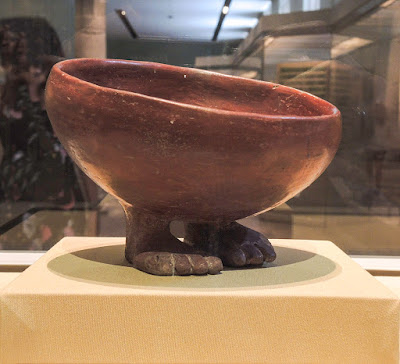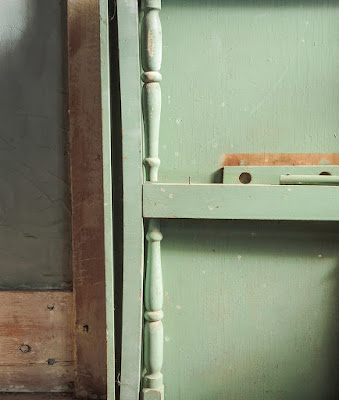Visiting the Metropolitan Museum of Art is always a delight for me, and a solace. Finally, after a long hiatus, I was back wandering the galleries full of marvels from around the world. In this first of several posts from the Met I thought I'd show some favorite things that I go to see almost every time I'm in the museum. I was very interested to note that I seemed to gravitate to objects, things of three dimensions rather than paintings, during that day.
First, a charming small bowl––about 5 inches wide––held up by feet, found in the Egyptian galleries. The image is an embodiment of the hieroglyph "to bring" so it's believed that it was an offering bowl. I love its rounded little feet, its imperfect round bowl tilting forward as though saying "here I am". When I saw that there was a small reproduction of this piece in the museum shop, I just had to have it, and it's now sitting on my desk, offering me joy.
This small dog is another perfect ceramic piece. He's to be found in the galleries devoted to the arts of the Americas. His expression is both alert, in his raised head and pricked ears, and calm, in the folded forms of his limbs. Such a good dog!
A very different mood is evoked by this figure, which is seemingly monumental, but less than 15 inches high. The flowing garment has lyrical curves, which follow the movement of the body beneath. The enlarged hands emphasize grief, especially the one holding the tilted head, a solemn gesture of sadness. This is such a beautiful, tender piece.
I love looking at this sensitively rendered portrait of an old man. He seems kind and thoughtful, reflecting on his life as he nears its end. In this painting, Memling shows himself to be a deeply humanistic painter.
Now on to two works which I had hoped to see, but were not on view. The Lamentation by Petrus Christus is my most loved painting in the museum, so I was crushed not to see it. The clarity of form, the repeating curved lines of the figures, the small mundane details, the landscape setting, the emotional reserve of the figures, all combine to create a strikingly moving scene.





























